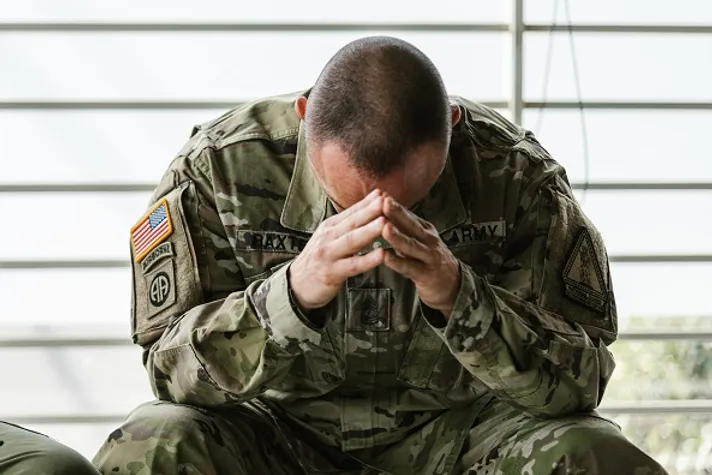Post-Traumatic Stress Disorder (PTSD) is a complex mental health condition triggered by experiencing or witnessing a traumatic event. While trauma is a part of the human experience, PTSD occurs when the mind and body struggle to process and heal from that trauma. For millions of people, PTSD becomes a daily battle that impacts relationships, career, and overall quality of life.
In this guide, we’ll break down what PTSD is, its causes and symptoms, and the most effective ways to support recovery and healing.
What Is PTSD?
PTSD is a mental health condition that can develop after a person experiences or witnesses a deeply distressing or disturbing event. It’s more than just a reaction to stress—it’s a long-lasting and often debilitating condition that interferes with daily functioning.
📌 Common PTSD Triggers: military combat, childhood abuse, sexual or physical assault, serious accidents, natural disasters, and witnessing violence.
When trauma is unresolved, the brain struggles to return to a sense of safety. This can lead to intense psychological and physical symptoms that persist for months or even years.
Causes of PTSD
PTSD can develop after any event that involves real or perceived danger. Some of the most common causes include:
-
Military combat or war-related trauma
-
Sexual abuse or assault
-
Domestic violence
-
Serious car accidents
-
Childhood trauma or neglect
-
Sudden loss of a loved one
-
Medical trauma, such as surviving cancer or a life-threatening illness
Not everyone who experiences trauma develops PTSD. Factors such as genetics, support systems, and pre-existing mental health conditions can influence how a person responds to trauma.
Key Symptoms of PTSD (According to DSM-5)
To be diagnosed with Post-Traumatic Stress Disorder, certain criteria must be met. These fall into four main categories:
1. Intrusive Thoughts
-
Recurrent, unwanted memories or flashbacks of the traumatic event
-
Nightmares or vivid dreams related to the trauma
-
Feeling as though the trauma is happening again (dissociation)
2. Avoidance
-
Avoiding places, people, conversations, or objects that serve as reminders
-
Emotional numbing or detachment from others
3. Negative Changes in Thoughts and Mood
-
Feelings of guilt, shame, or hopelessness
-
Difficulty experiencing positive emotions
-
Persistent negative thoughts about oneself or the world
4. Changes in Physical and Emotional Reactions
-
Hypervigilance or being easily startled
-
Trouble sleeping or concentrating
-
Irritability, anger outbursts, or self-destructive behavior
⚠️ Important: Symptoms must last more than a month and cause significant distress or impairment in daily functioning.
How PTSD Affects Daily Life
Left untreated, PTSD can permeate every aspect of a person’s life. It can make relationships difficult, lead to job loss, and increase the risk of depression, substance abuse, or suicide. Many individuals isolate themselves due to feelings of shame, fear, or being misunderstood.
Common Challenges:
-
Difficulty trusting others
-
Emotional withdrawal from loved ones
-
Panic attacks or anxiety in public spaces
-
Fear of vulnerability and intimacy
How to Cope with PTSD in Healthy Ways
Healing from trauma is possible, but it requires time, professional support, and compassionate self-care. Here are some of the most effective strategies for PTSD recovery:
1. Seek Professional Help
Working with a trauma-informed therapist or psychiatrist is crucial. Evidence-based treatments like:
-
Cognitive Behavioral Therapy (CBT)
-
EMDR (Eye Movement Desensitization and Reprocessing)
-
Somatic therapy
-
Medication (as prescribed by a professional)
These approaches can help rewire the brain, regulate the nervous system, and make trauma memories less distressing.
💬 Search for “PTSD therapist near me” or explore national directories like Psychology Today.
2. Open Up to Your Support System
Talking to a trusted partner, friend, or family member can help reduce shame and create a safe space for healing. Let your support system know how they can best show up for you, whether that means listening, offering distractions, or just being present.
🧠 Tip: You’re allowed to pause conversations when things feel overwhelming. Healing happens on your terms.
3. Be Patient with Your Healing Process
Recovery is rarely linear. You may have good days followed by setbacks—and that’s completely normal. Be gentle with yourself. Celebrate small victories and practice self-compassion daily.
🧘🏽 Affirmation: “I am doing the best I can. My healing is valid, even when it’s not visible.”
4. Join a PTSD or Trauma Support Group
Connecting with others who’ve experienced similar traumas can be deeply validating. Look for:
-
Local community groups
-
Online forums (like Reddit’s r/PTSD)
-
National organizations like Give an Hour, Wounded Warrior Project, or RAINN
Developing Post-Traumatic Strength
We often think of strength as physical resilience, but mental strength is just as powerful. Survivors of trauma often develop deep empathy, emotional intelligence, and inner fortitude. This is sometimes referred to as post-traumatic growth or post-traumatic strength.
Ways to Build Mental Strength:
-
Practice self-compassion
-
Cultivate a positive mindset, even in small ways
-
Focus on meaning and purpose
-
Set boundaries that protect your peace
-
Celebrate your resilience and growth
Final Thoughts: You Are Not Alone
PTSD is real, painful, and complex—but it is also treatable. With the right resources, support, and patience, healing is possible. Remember, reaching out for help is a sign of strength, not weakness.
🌱 If you or someone you love is struggling with PTSD, help is available. Don’t hesitate to contact a mental health professional or crisis line today.


